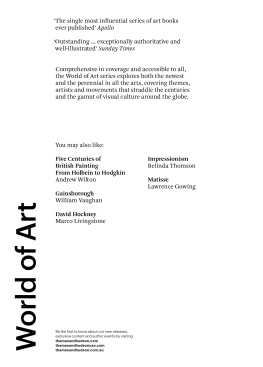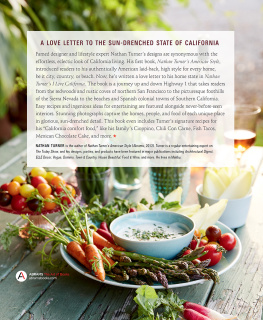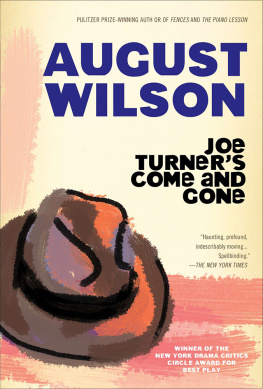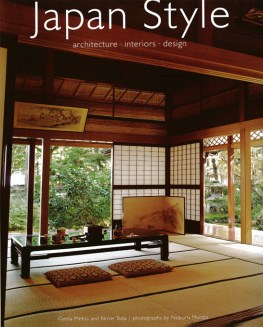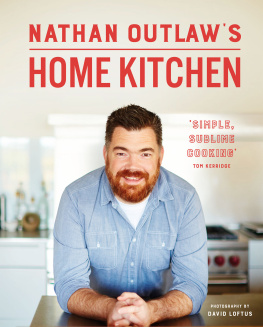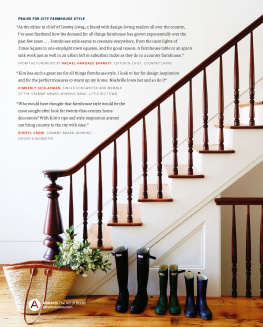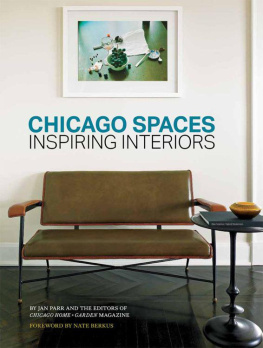

This book is dedicated to the women who taught
me everything I know about living wellmy mother,
Judy, and my grandmothers, Marion and Dora.
CONTENTS
by India Hicks

A
FOREWORD
I can remember clearly the first time I met Nathan. I was deeply shocked by the appalling state of his car. My children would describe it as a hobos carfilled with clutter: empty coffee mugs, paper receipts, torn newspaper clippings, paint chips, fabric samples, odd socks, not to mention a vast, huffing Labrador retriever.
And then I toured his shop, an oasis of calm and order, rich with antique discoveries, architectural drawings, brazen photography, curated objects, and... a huffing Labrador retriever.
This book takes us on that tourand beyondto inform and delight us. Its title describes what he is best at: a sense of design that is comfortable and livable.
From decoration to dining, he is an entertainer in every sense.
India Hicks,
Harbour Island, 2012
(And if you can, drive yourselfdont get a lift.)

At home in Malibu with dogs Daisy and Nacho. The flag photograph is by Oberto Gili.
A
INTRODUCTION
HOW I DISCOVERED MY INNER STYLE
A s a born-and-bred California boy, I have lived on the coast, in the city, and in the mountains. All were completely different experiences that have impacted me in profound, distinct ways since childhood. California is such a varied place: A Northern California beach experience, for example, has little in common with what goes on at a Southern California beach. Ditto for the city and country locales. But despite all of these differences, I do see a common thread: California is, after all, the birthplace of casual design. Seventy-five years ago, architects from all over the world came here and discovered new ways of living. The division between indoor and outdoor space became blurred. Formal rooms gave way to stunning, open areas for entertaining, relaxing, and living, and the whole notion of relaxed style came to be. I love that this is the one place in the world that really celebrates a barefoot, fuss-free, and high-style approach to living. Where else can you get that?
Its such a unique mix, and my approach to decorating and entertaining is all about finding new ways to live and celebrate with low effort and high stylewhether you live near the beach, in the city, or in the country. Now more than ever, with so many of us leading hectic lives, I feel that stuffy, high-maintenance living is simply a thing of the past. Who wants to slave over a meal all day when there are one hundred other items on their to-do list? Or create a living room thats overdecorated to the point of needing a Keep Out sign? It might have made sense a few generations ago, but it doesnt now that everyone seems to have less time and more to do. That said, living well is still an absolute necessity. My goal is to create a new era of laid-back, highly stylish design and entertaining ideas that can be implemented without huge amounts of effort or expense. Whether youre looking to redesign just a small room or the entire house, or whether you want to throw an intimate dinner party or a major blowout, Im convinced that it can be done without going into debt, and while having a great time!
A
THE LITTLE SHOP THAT COULD
W hen I opened my store in Los Angeles almost exactly ten years ago, I honestly had no idea where it would take me. None. Back in 2002, I was totally new to L.A., had very few contacts in the design world, and barely had any friends in the city! But what I did know was that I was determined to open a space that was more than a shop, that could be shared with others and used to explore different ways of entertaining. To this day, all of these years later, I continue to think of my store as something of a laboratory where Im free to experiment with paint, furniture, art, and accessories for everything from intimate cocktail gatherings to full-blown mega parties where the valet line wraps around the block.
Back when I was just starting out, I tried to stay focused on the process, not on the outcome. There were days in the beginning when not a single customer would come in, but Id keep myself busy by moving things around or doing some kind of outreach in the design community. I stayed with the process, which is a good thing, because if I had obsessed over becoming successful, I probably would have given up a long time ago! This approach stays with me, and I still do my best to be laser-focused on what I love: creating stylish and functional spaces, and low-effort, high-style entertaining.
Back in 2002, however, I hadnt yet fully explored this passion. At that point, I was just looking for a space that would make for a good design location in L.A.s highly competitive world of home showrooms. Then, one day while driving around town, I discovered a tiny street called Almont Drive. Its in West Hollywood, sandwiched between the heart of Santa Monica Boulevard, with all of its bustling restaurants and clubs, and Melrose Avenue, which is where a lot of the high-end L.A. home showrooms are located. Almont Drive was a small and quiet street with practically no retail action. It was there that I found a shabby bungalow with overgrown trees and a handwritten sublet sign. The bungalow was completely scruffy, and yet something compelled me to call the next day. Cut to a month later, and I had opened my first store.
It turns out that how I got from that forlorn and forgotten place to a shop that had my name on the awning involved a process that I would replicate over and over and over again. The shop ended up being just one of many projects where budget, time, and space would create unique decorating challenges requiring stylish and clever solutions. As it is for any person approaching a new business venture, the name of the game was to keep overhead low. I definitely wasnt in a position to call in an architect and overhaul the place with fancy, brand-new everything. Instead, I had to take this 1930s bungalow, with its series of tiny rooms, its less-than-perfect finishes, and its overgrown garden, and make the best of it with the least amount of money. Yes, the architectural bones were there, but so was an enormous amount of work.

Right from the start, my shop became my own personal decorating lab, with finds like this pair of antique architectural French lamps.

At the shop, Daisy lounges on a nineteenth-century English sofa in front of an eighteenth-century Italian screen hung with a mix of modern prints and antique oil paintings.
Since I needed to make the place look amazing for as little money as possible, I used the old standard cheap-and-chic trick: I painted all of the rooms a single neutral color (Behrs Windsor Castle), which went on the walls, trims, moldings, and doors to make them sort of disappear. Its a great approach for any space with less-than-ideal finishes. Then I put seagrass on the floor, my never-fail trick for giving a space an instant lift in the elegance department without spending a ton of money. The paint and floor coverings helped draw the eye away from the spaces imperfections and instead put the focus on its cottage-like proportions, the cozy fireplace, and of course, all of the furniture, art, and accessories that I was going to put in each and every room.
Next page

